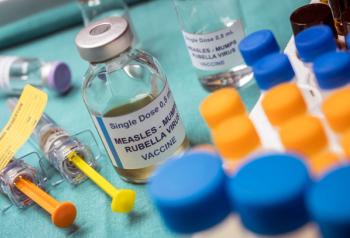
New E-Tattoo Takes ECG, SCG Readings Simultaneously
Researchers at the University of Texas, Austin, created a paper-thin device to collect key heart readings wirelessly and continuously.
A new lightweight, stretchable “e-tattoo” has the ability to continuously and simultaneously measure electrocardiography and seismocardiography — for a fraction of the cost of traditional testing.
The device was developed at the University of Texas, Austin. The research underlying the invention was
The device is not the first e-tattoo for electrocardiograms (ECGs). And a variety of
The breakthrough in the new e-tattoo is the device’s ability to conduct seismocardiography, a measurement of chest vibrations, using the same stretchable materials as the ECG. The device is powered remotely by the patient’s smartphone.
Developing the E-Tattoo
Nanshu Lu, Ph.D., an associate professor of engineering at UT-Austin, told Inside Digital Health™ that the device required three major innovations. The first was a “cut-and-paste” fabrication process to facilitate the manufacturing and prototyping of the e-tattoos.
Next, researchers created a dual-sensor noise-cancellation strategy, which makes it possible to conduct the seismocardiography in a mobile setting.
Finally, Lu and colleagues discovered a correlation between systolic time interval and blood pressure that enabled the e-tattoo to track blood pressure in a comprehensive but noninvasive way.
Benefits of ECG and SCG Readings
Those innovations enable clinicians to get ECG and SCG readings over long periods of time without significant discomfort to the patient. Obtaining ECG and SCG data simultaneously also gives cardiologists a more robust picture of a patient’s cardiac health, Lu said. It all translates to less time in the clinic for patients and a lower cost to the healthcare system.
“The material and fabrication cost of our dual-mode e-tattoos are orders of magnitude lower than state-of-the-art Holter system (for ECG measurement) and stethoscope (for (phonocardiogram) measurement, which is also chest mechanical vibration but a higher frequency than SCG,” she said.
The device contains 3D image correlation technology that maps chest vibrations and can help determine the best chest location on which to place to the e-tattoo.
What’s Next for the E-Tattoo?
While the prototype exists, Lu said she and her team are working on next steps before the device can be commercialized. They have developed a smartphone app that stores data and provides heartbeat visualization. Now, they are working to improve the app’s data storage and collection. They are also trying to extend the amount of time the device can be remotely powered to allow for longer periods of data collection.
But Lu said her team is close to being finished.
“With that, we are in discussions with a major pharmaceutical company to validate our ECG and SCG e-tattoo first on non-human primates and hopefully, eventually, on human subjects,” she said.
According to the Centers for Disease Control and Prevention, one in every four deaths (about 630,000 per year) is the result of heart disease. That carries a cost of $200 billion per year in healthcare spending and lost productivity.
The work is funded by the Office of Naval Research, the Air Force Office of Scientific Research, the National Science Foundation and the National Institutes of Health.
Get the best
Related






















































































